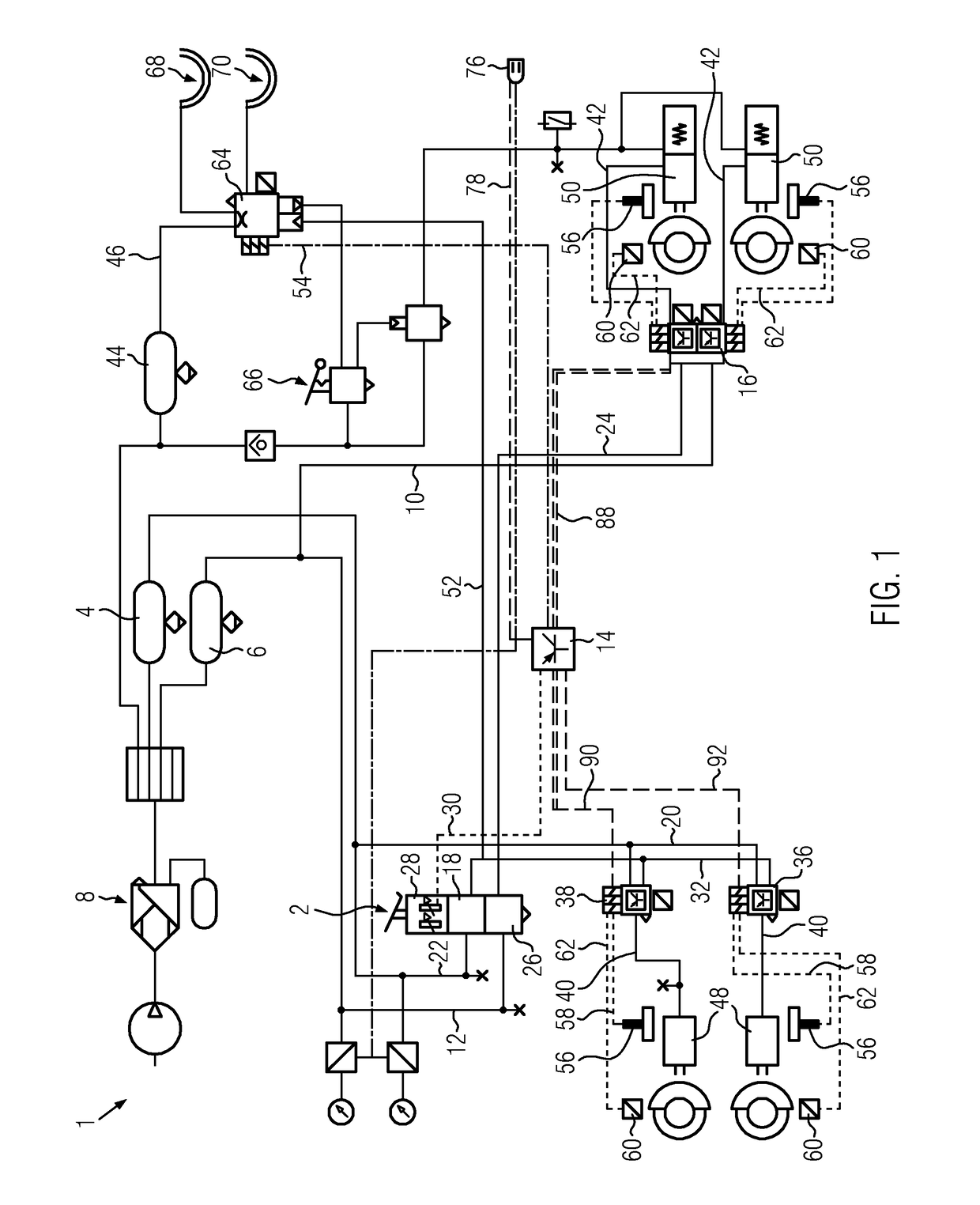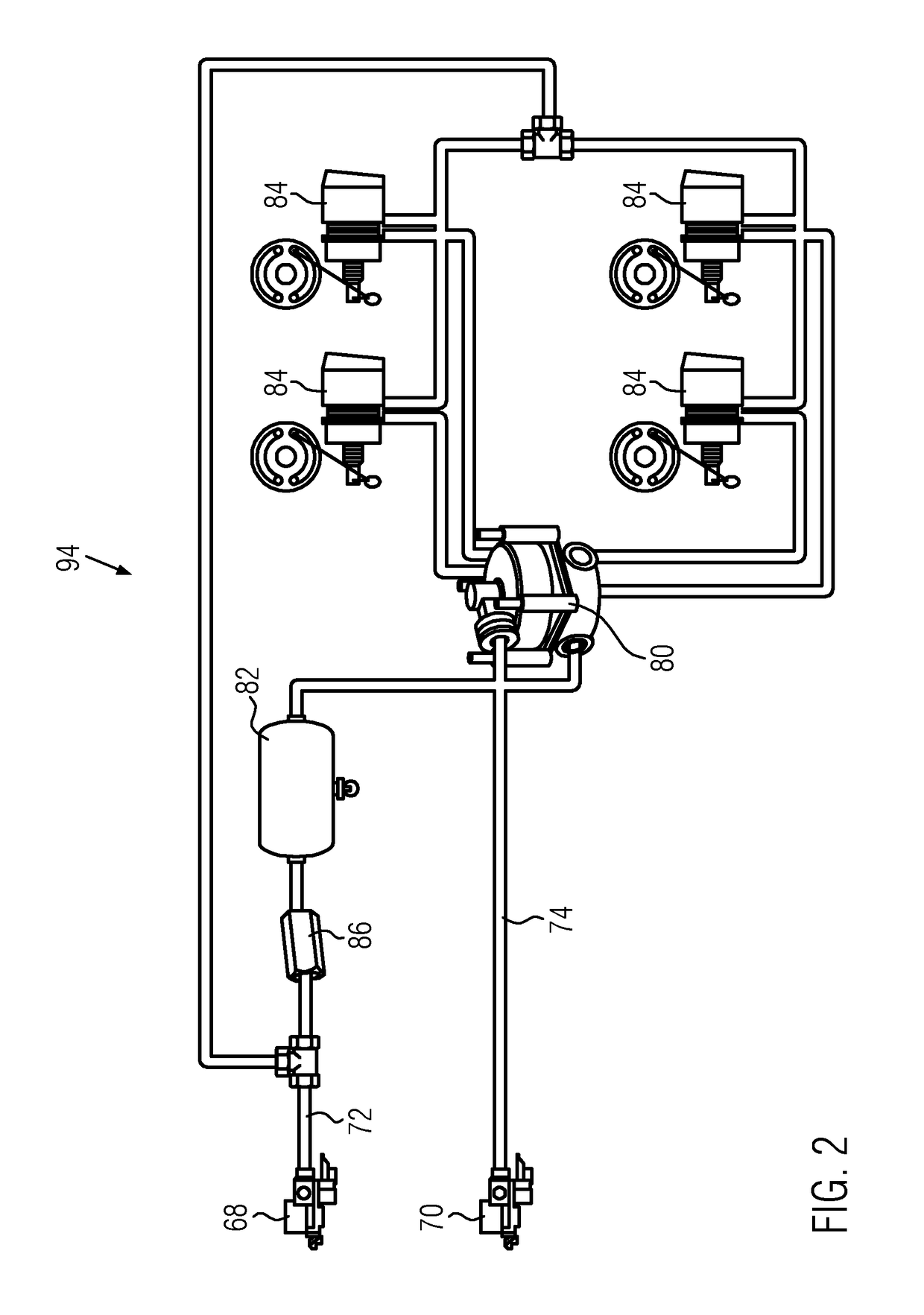Method for braking a traction vehicle-trailer combination with reduced trailer braking force as a function of the response of the ABS of the traction vehicle
a technology of traction vehicle and traction vehicle, which is applied in the direction of automatic initiation, braking system, etc., can solve the problems of trailer swinging out with respect, trailer loss of lateral guidance, and poor traction control accuracy
- Summary
- Abstract
- Description
- Claims
- Application Information
AI Technical Summary
Benefits of technology
Problems solved by technology
Method used
Image
Examples
Embodiment Construction
[0035]FIG. 1 is a schematic view of an exemplary embodiment of a service brake system 1 of a traction vehicle of a traction vehicle-trailer combination. In the present case, the traction vehicle-trailer combination has merely a 2-axle semitrailer, but a drawbar trailer or a plurality of drawbar trailers can also be attached to the traction vehicle.
[0036]In this context, the service brake system 1 of the traction vehicle is formed, for example, by an electropneumatic friction brake system in the form of an electronically controlled brake system (EBS; electronic brake system).
[0037]In the case of such an electronically controlled brake system (EBS), pressure control modules 16, 36, 38 are present on axles or wheels, with integrated inlet valves, outlet valves and back-up valves as well as with pressure sensors for sensing the actual brake pressure and with superordinate control electronics for coordinating the actual brake pressures with the setpoint brake pressures according to the r...
PUM
 Login to View More
Login to View More Abstract
Description
Claims
Application Information
 Login to View More
Login to View More - R&D
- Intellectual Property
- Life Sciences
- Materials
- Tech Scout
- Unparalleled Data Quality
- Higher Quality Content
- 60% Fewer Hallucinations
Browse by: Latest US Patents, China's latest patents, Technical Efficacy Thesaurus, Application Domain, Technology Topic, Popular Technical Reports.
© 2025 PatSnap. All rights reserved.Legal|Privacy policy|Modern Slavery Act Transparency Statement|Sitemap|About US| Contact US: help@patsnap.com



